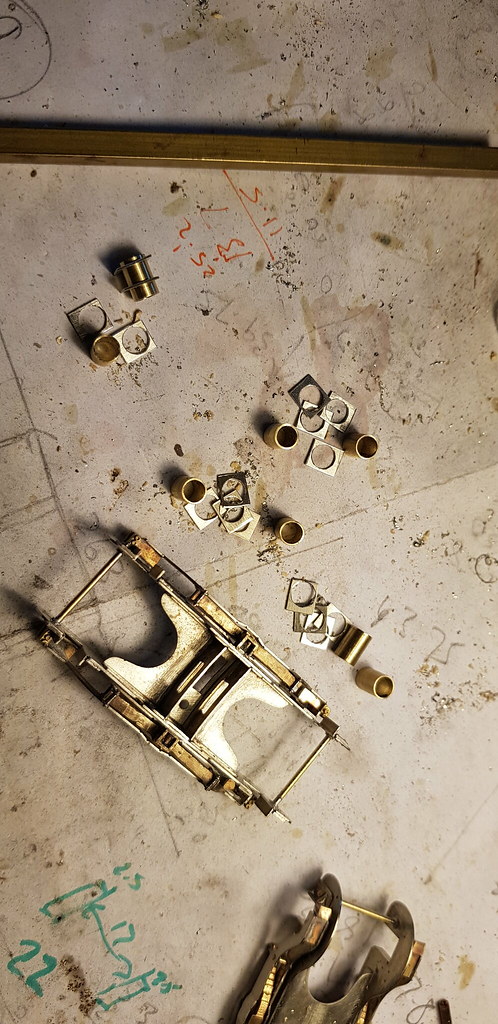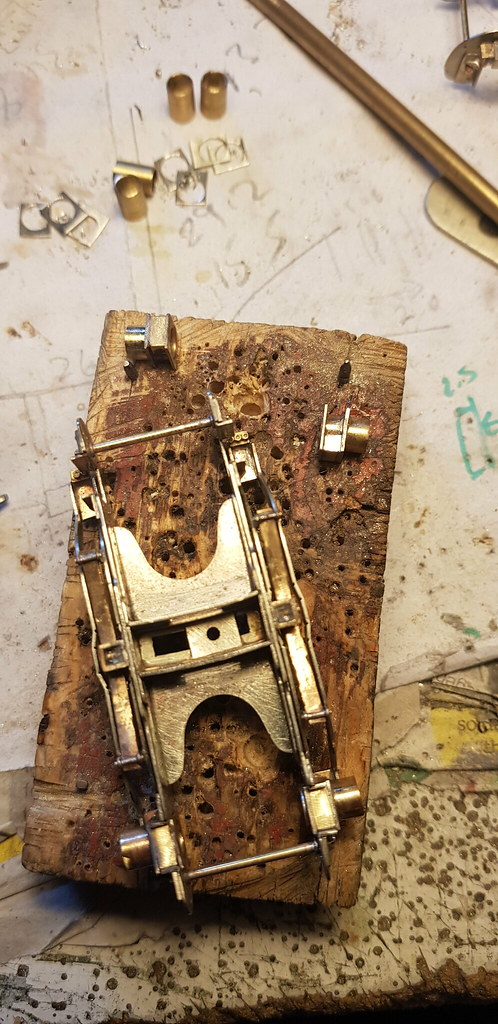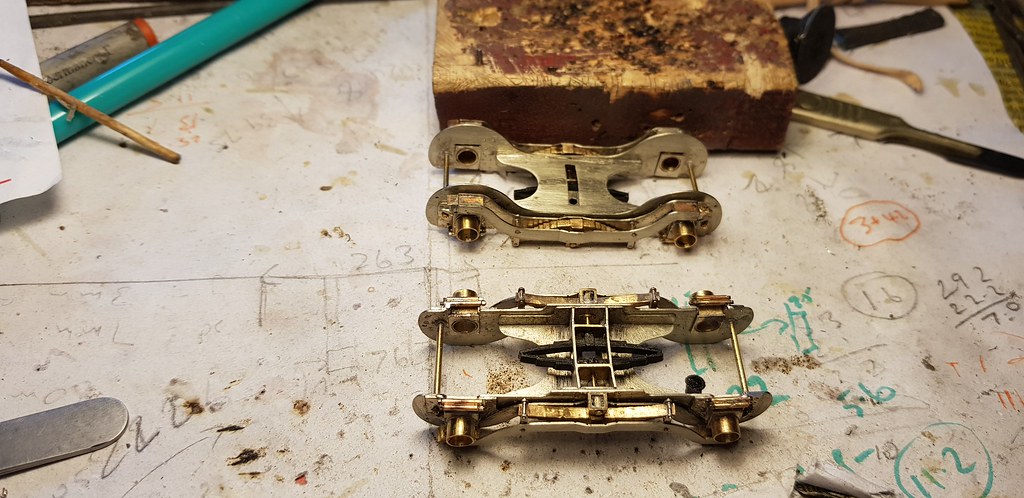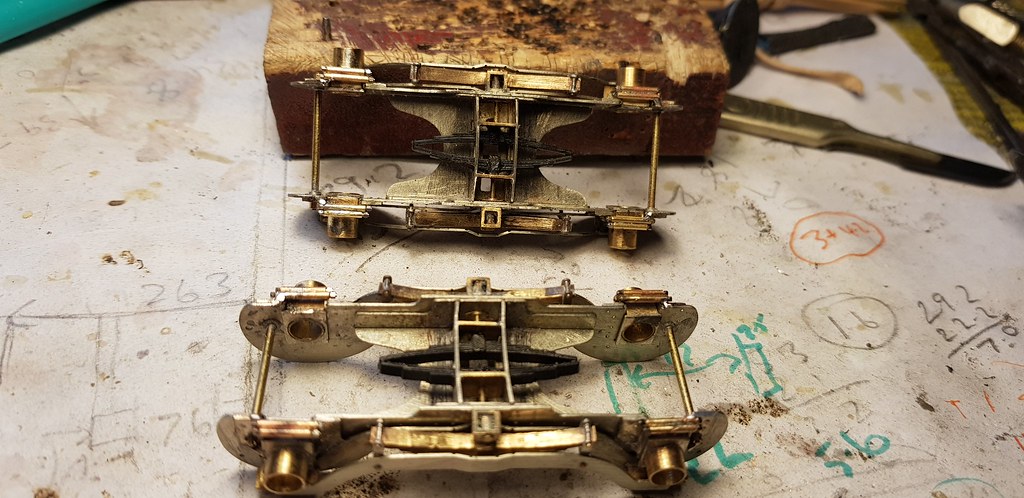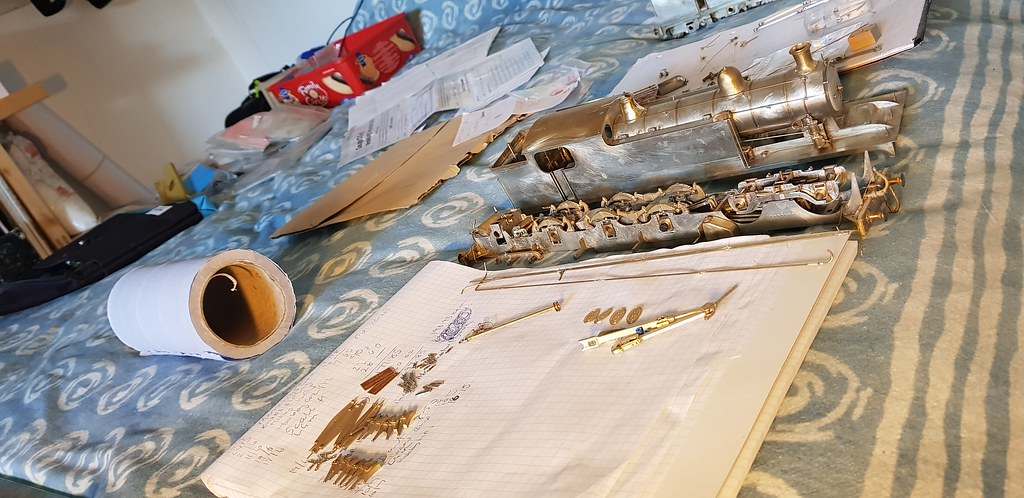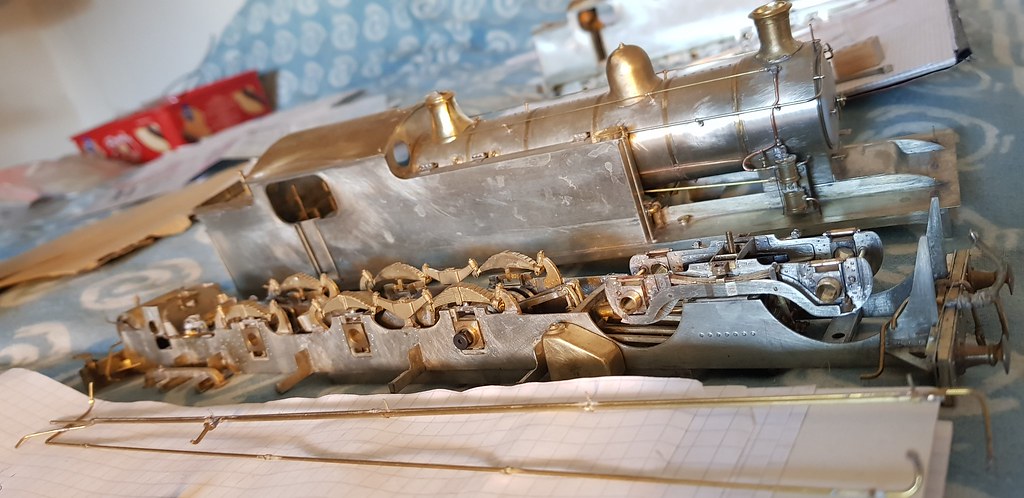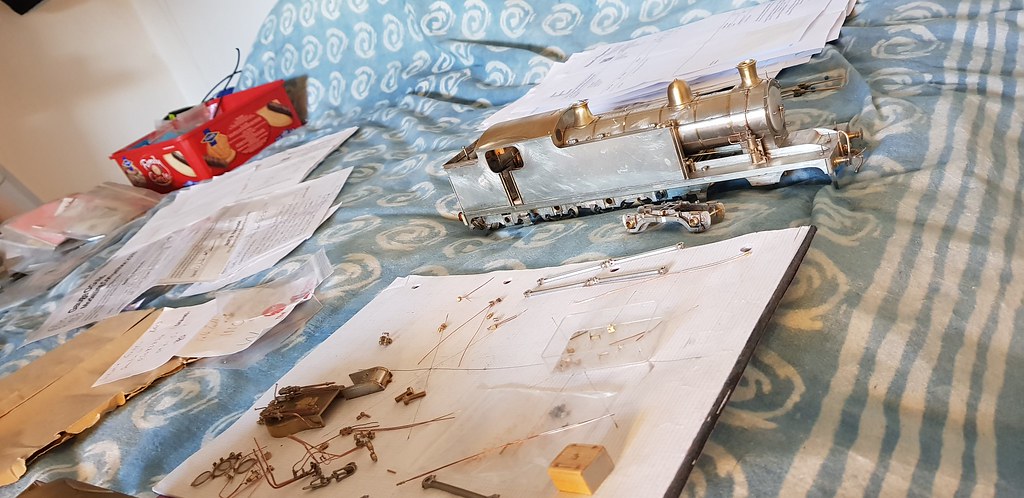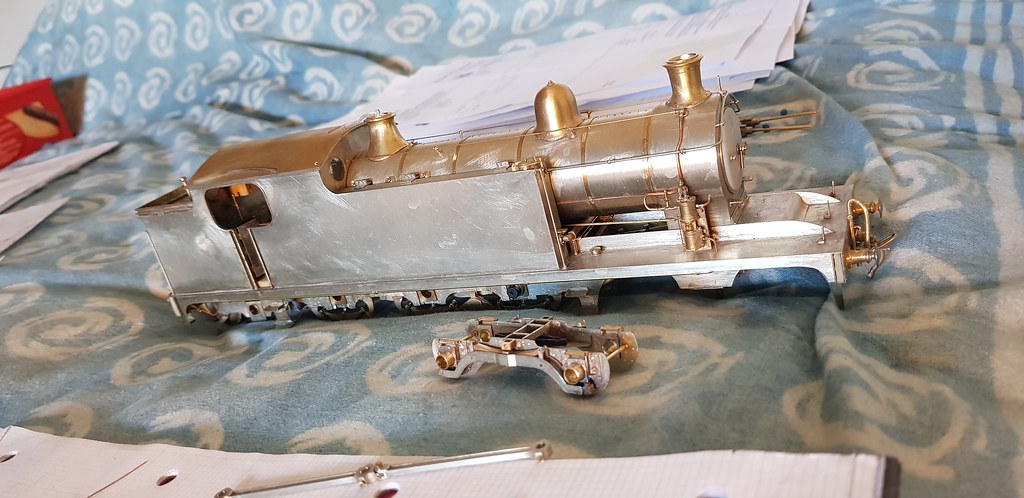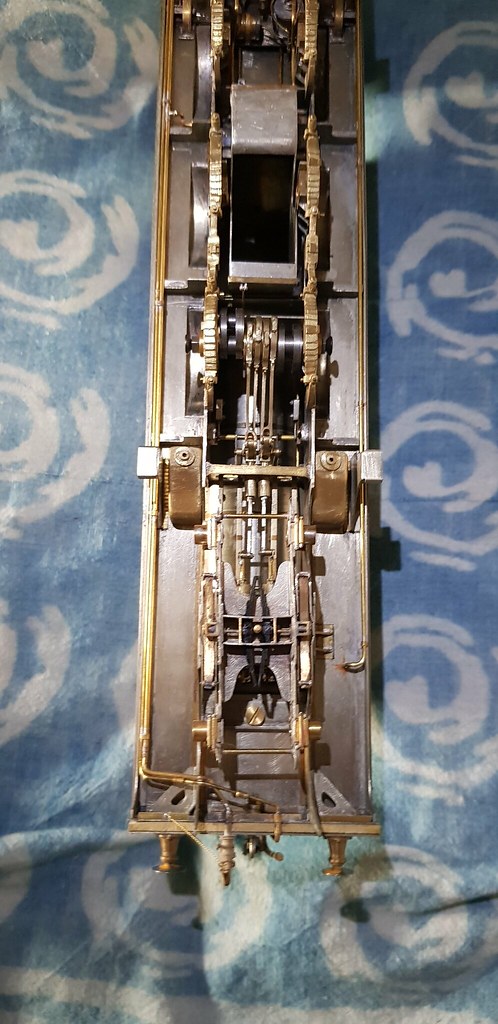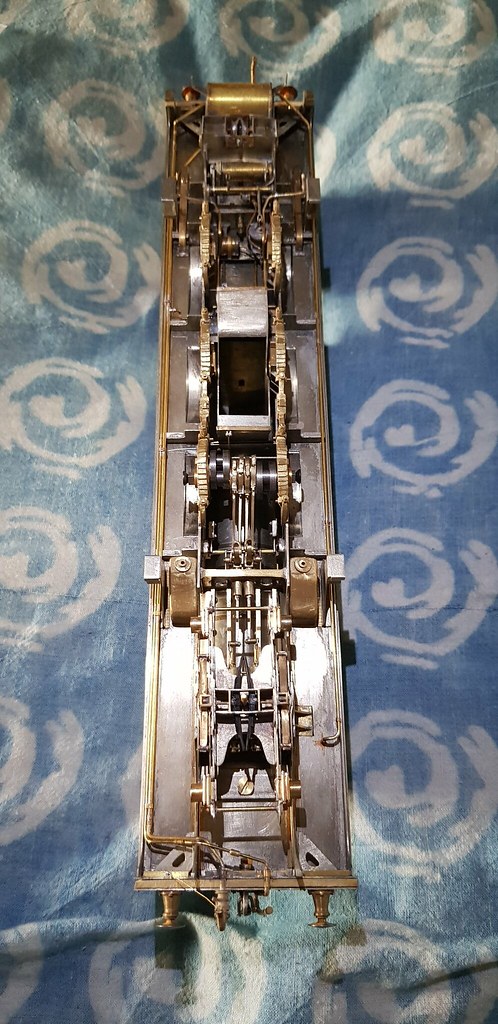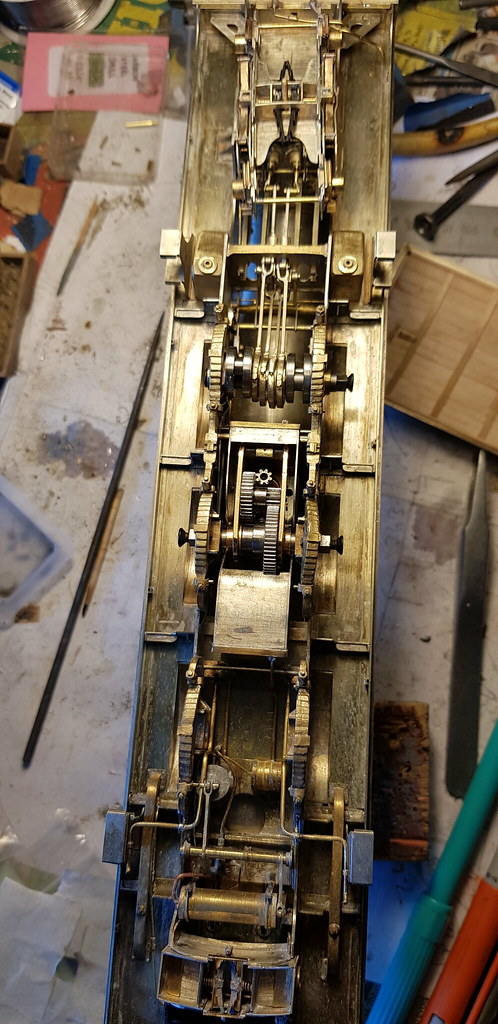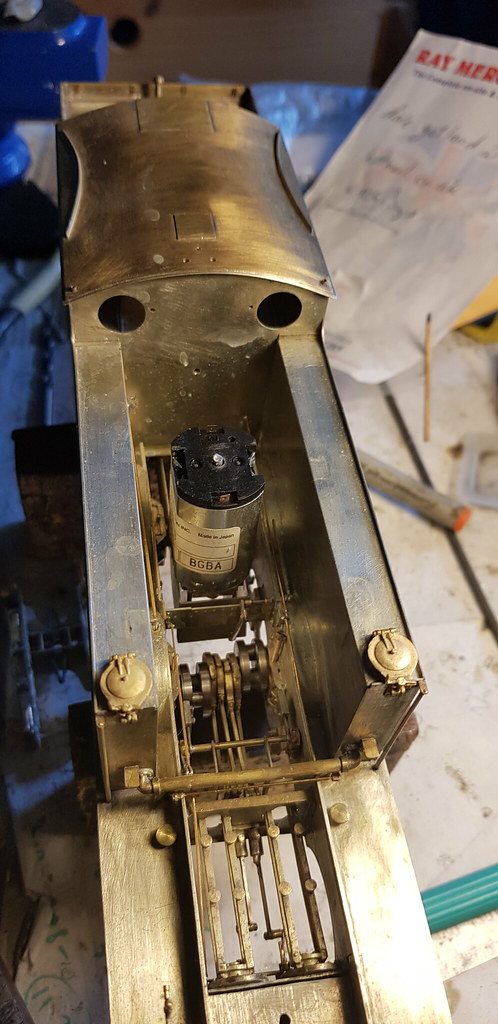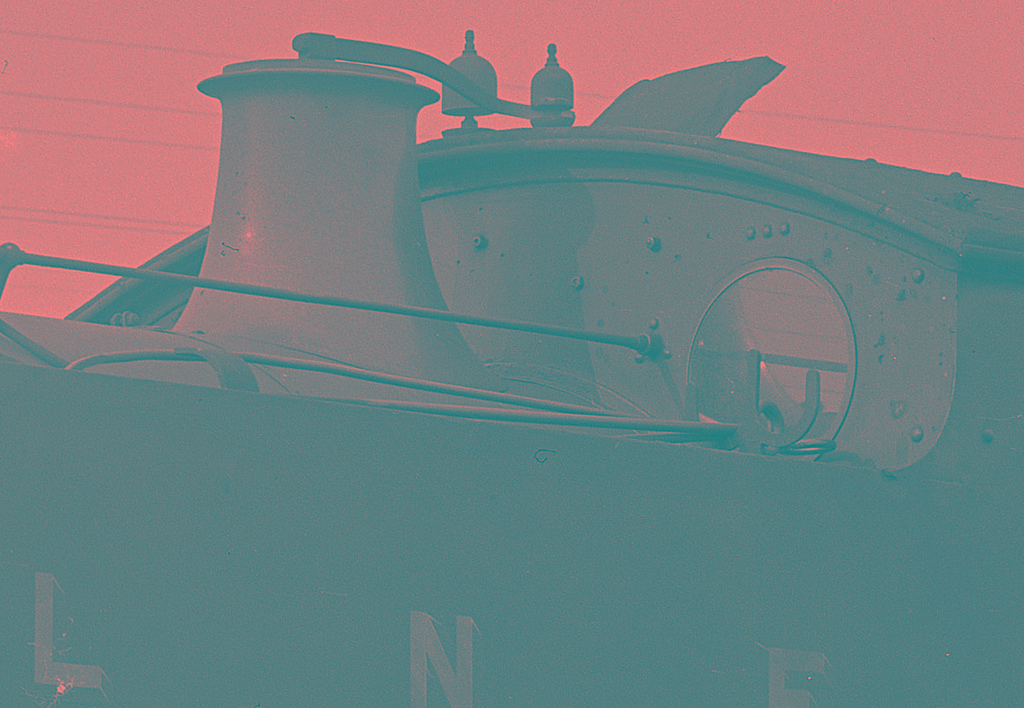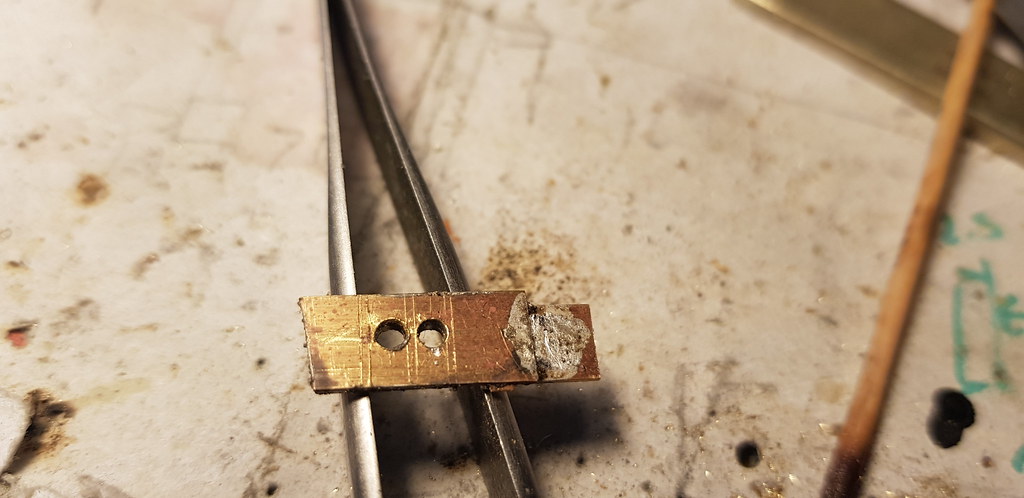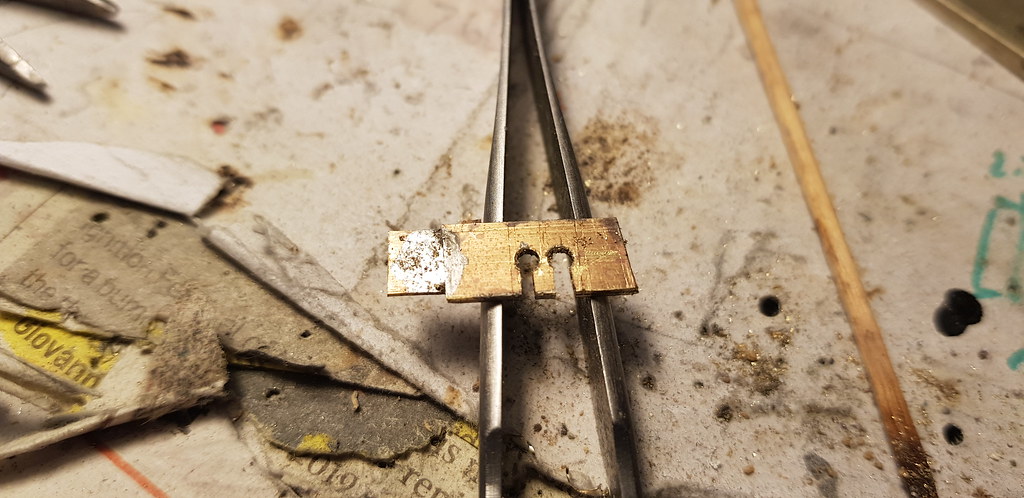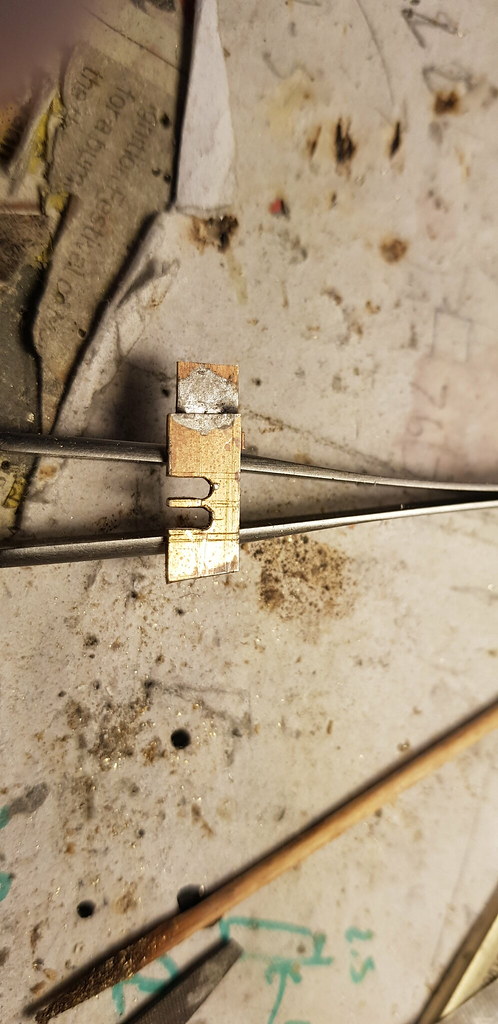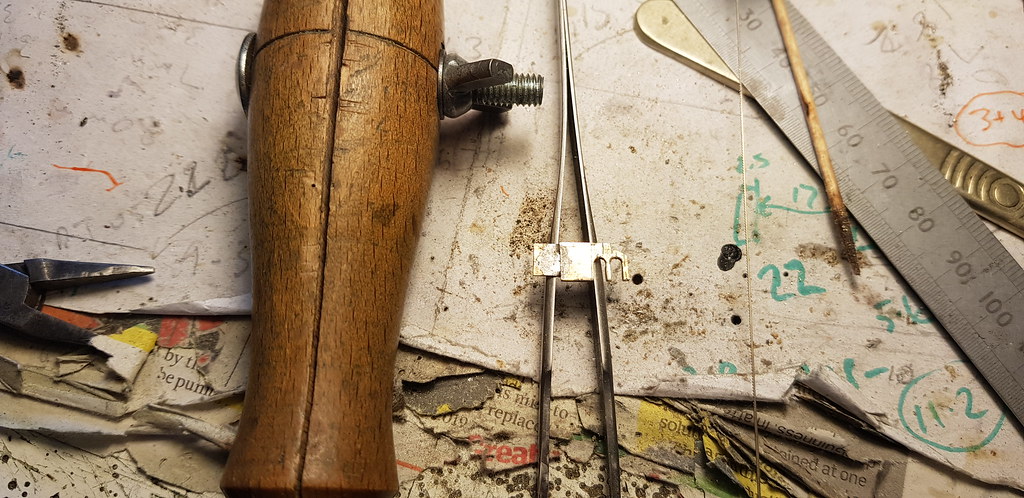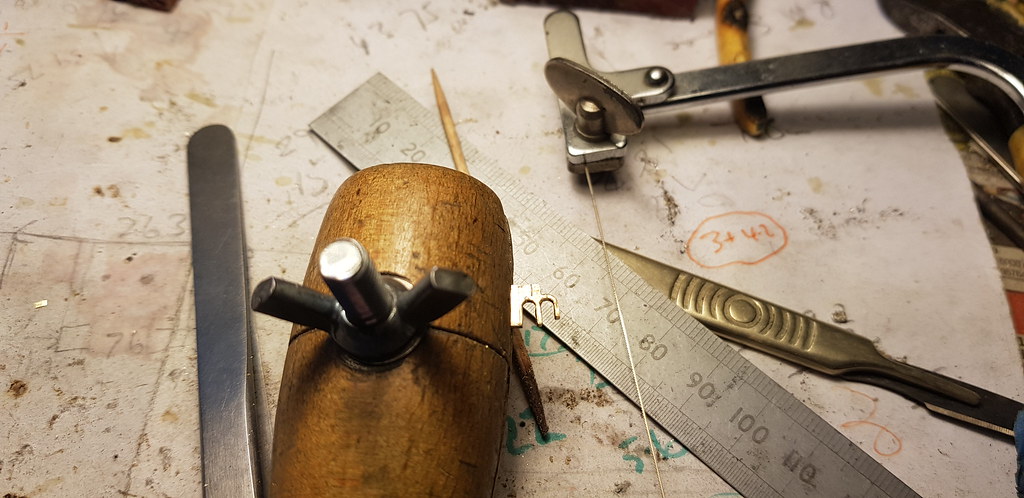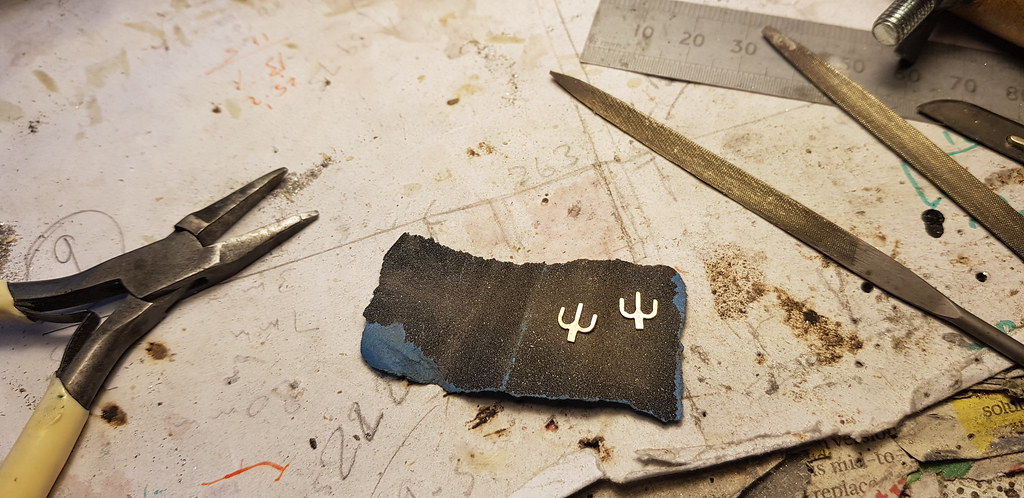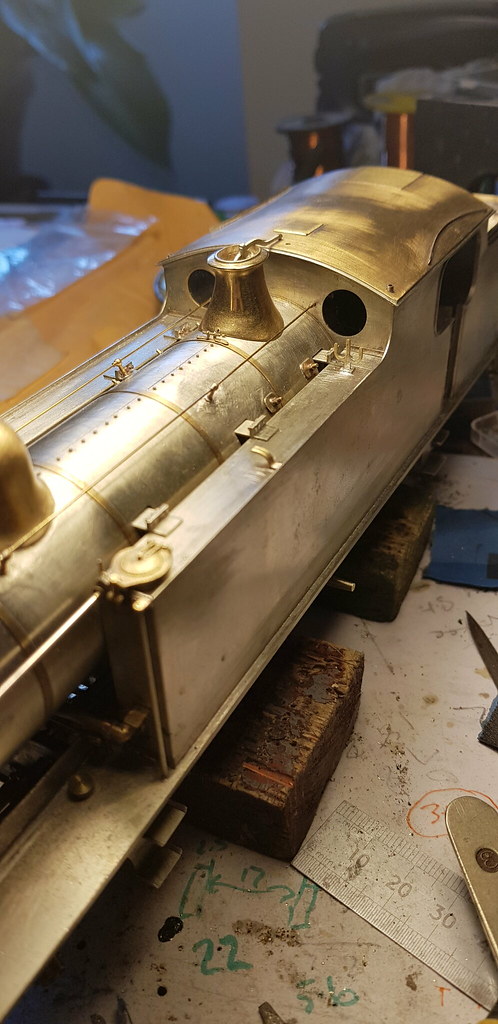Nick Dunhill
Western Thunderer
...before I started with the bogies I prepared all the brake parts. I can't really get much further assembling the brake system until I have some wheels. They're going to be made available by Slater's quite soon I understand, hope so!

I cut out the name plates too. A sign the end is near when I cut out the plates! (If anyone is doing pre-grouping NER and wants the spare pair of plates get in touch.)
I also prepared all the etchings for the bogie and got some suitable spring castings from LGM (they're GWR ones I believe,) they required the fixings cutting off and straightening slightly. This was achieved easily by carefully gripping them in 2 pairs of pliers and bending to the required deflection.
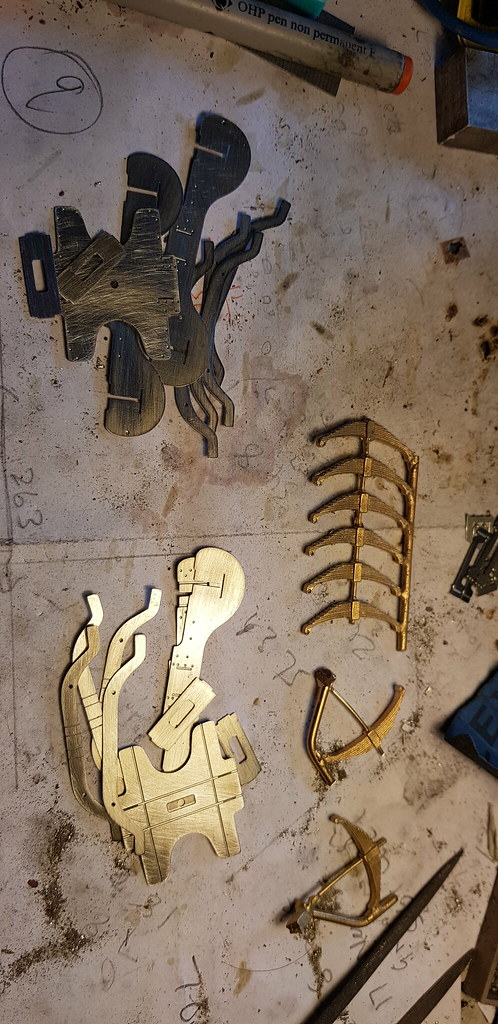
The horn guides on the bogie sides were detailed up using NS strip suitably embossed with rivet heads and the triangular gussets added.

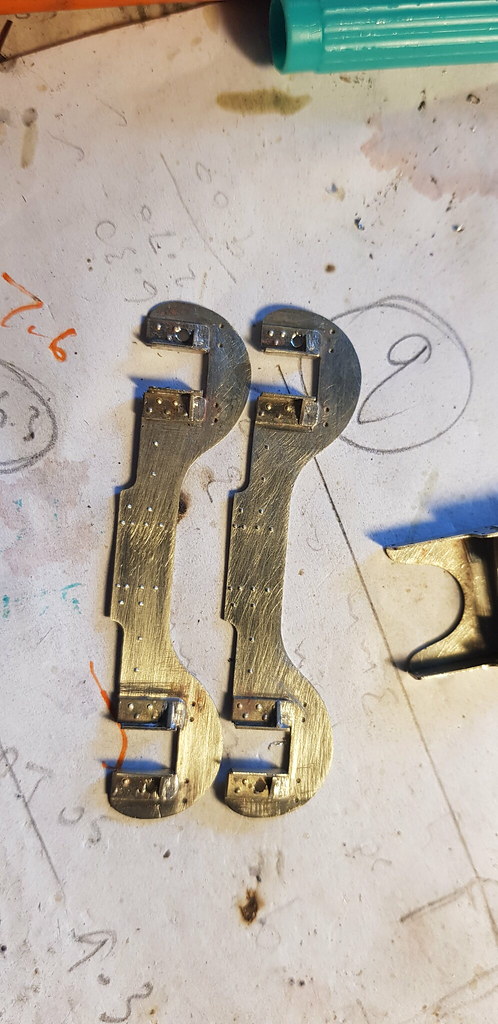
The guides as supplied on the etches can be used straight if you prefer, but as can be seen above in Tom's post they're actually curved. I had to cut a bit off the top of each guide, as it won't now be located in an half-etched slot. The guides were gently curved and the stretcher was folded up with the curved guides held captive.

A simple die block was made as a slider which was held captive with a couple of strips of brass. The side plates were attached using the half etched locating slots.
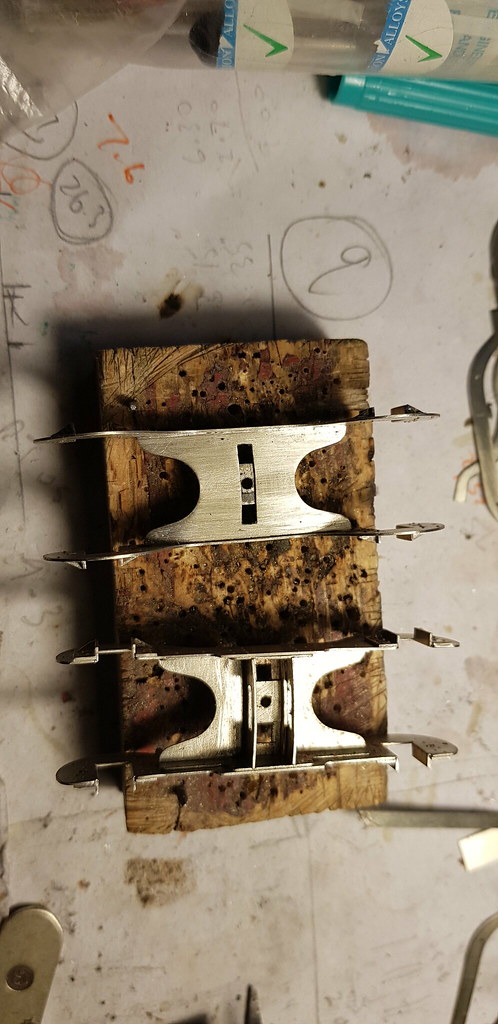

The equalising beams were made up from the etches and cast springs. A simple jig was made to facilitate this and 8 drop links (per bogie) for the springs were also made.
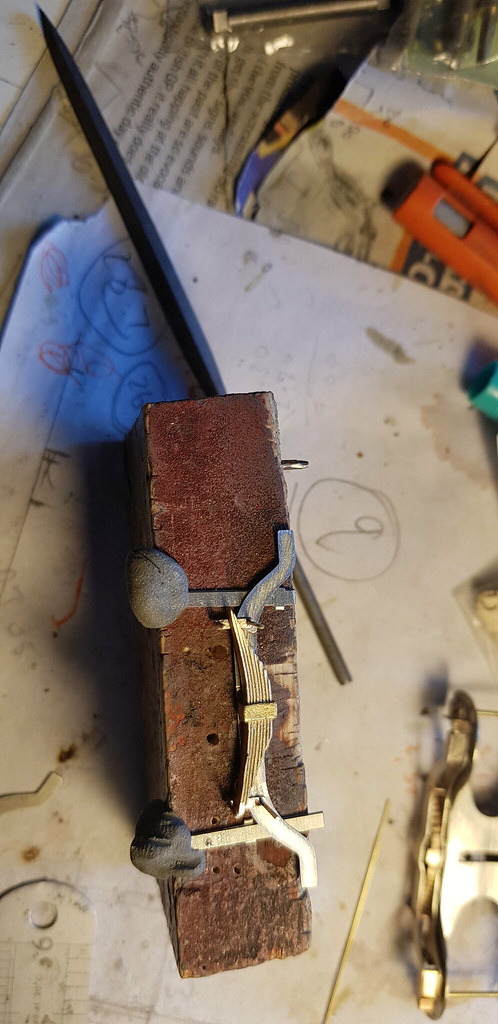
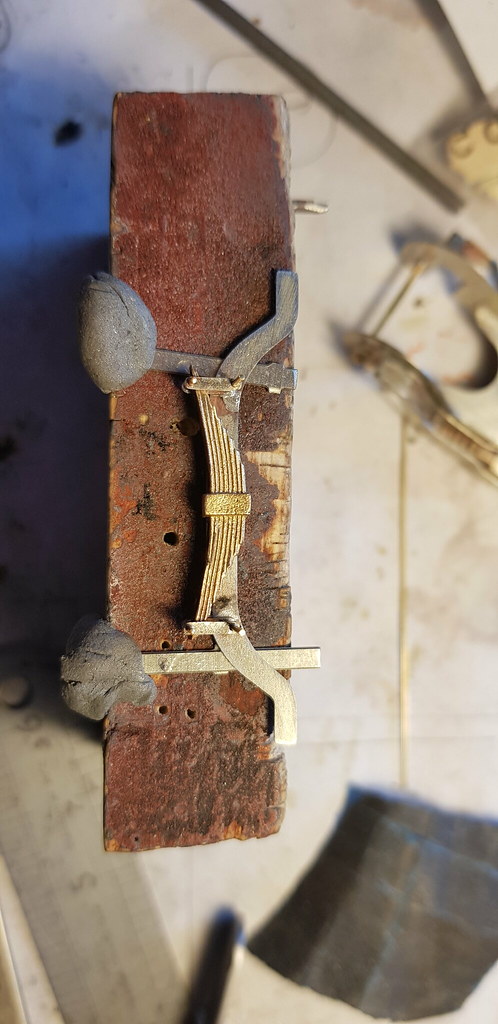
This is how the beams look when removed from the jig.
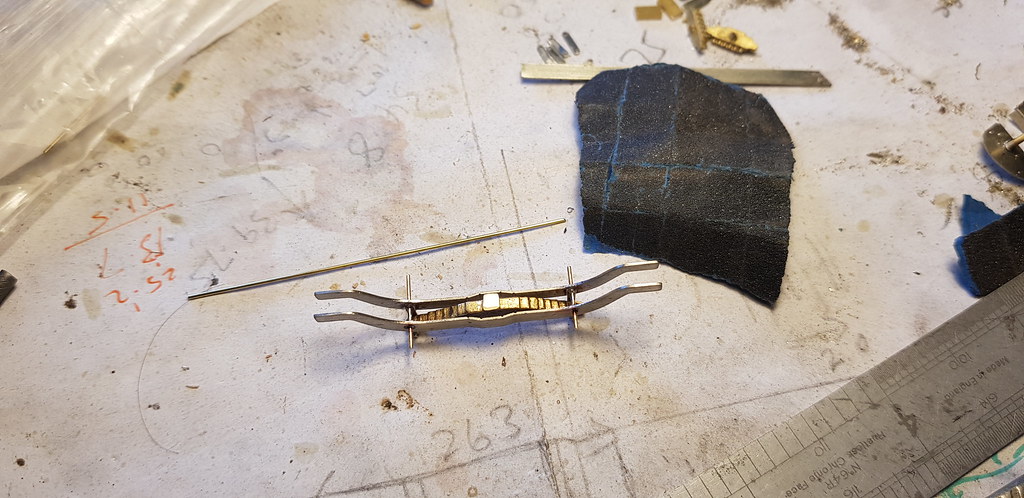
A block and oil box was added to the ends of each beam.

The beams are simply then added to the sides of the bogie frames, this required some cutting away of the inner triangular strengthening gussets on the horn guides. This is the result.

I need to add some axleboxes and keeper plates, and some plastic (cosmetic) wagon springs for the side control. Plus I need to work out how best to make the side control work (suggestions welcome, but I'm looking for something unobtrusive.)
Of course if you are building one of these yourself and don't mind them not being compensated LGM does some nice cast ones. It will save a couple of days fabricating!
1-001: NER F & M Class locomotives etc. – LG Miniatures
This marks the end of the etches Mick and I produced for this loco. There have been no further mistakes in the sheets other than the ones outlined earlier in this thread. Thanks for your help Mick it was invaluable.
Has anyone had any of the S7 Britannia wheels off Slater's? If so what diameter are the bogie and pony axles?
Next I finish off the bogies and do some painting and decorating in our house whilst patiently waiting for wheels......

I cut out the name plates too. A sign the end is near when I cut out the plates! (If anyone is doing pre-grouping NER and wants the spare pair of plates get in touch.)
I also prepared all the etchings for the bogie and got some suitable spring castings from LGM (they're GWR ones I believe,) they required the fixings cutting off and straightening slightly. This was achieved easily by carefully gripping them in 2 pairs of pliers and bending to the required deflection.

The horn guides on the bogie sides were detailed up using NS strip suitably embossed with rivet heads and the triangular gussets added.


The guides as supplied on the etches can be used straight if you prefer, but as can be seen above in Tom's post they're actually curved. I had to cut a bit off the top of each guide, as it won't now be located in an half-etched slot. The guides were gently curved and the stretcher was folded up with the curved guides held captive.

A simple die block was made as a slider which was held captive with a couple of strips of brass. The side plates were attached using the half etched locating slots.


The equalising beams were made up from the etches and cast springs. A simple jig was made to facilitate this and 8 drop links (per bogie) for the springs were also made.


This is how the beams look when removed from the jig.

A block and oil box was added to the ends of each beam.

The beams are simply then added to the sides of the bogie frames, this required some cutting away of the inner triangular strengthening gussets on the horn guides. This is the result.

I need to add some axleboxes and keeper plates, and some plastic (cosmetic) wagon springs for the side control. Plus I need to work out how best to make the side control work (suggestions welcome, but I'm looking for something unobtrusive.)
Of course if you are building one of these yourself and don't mind them not being compensated LGM does some nice cast ones. It will save a couple of days fabricating!
1-001: NER F & M Class locomotives etc. – LG Miniatures
This marks the end of the etches Mick and I produced for this loco. There have been no further mistakes in the sheets other than the ones outlined earlier in this thread. Thanks for your help Mick it was invaluable.
Has anyone had any of the S7 Britannia wheels off Slater's? If so what diameter are the bogie and pony axles?
Next I finish off the bogies and do some painting and decorating in our house whilst patiently waiting for wheels......

